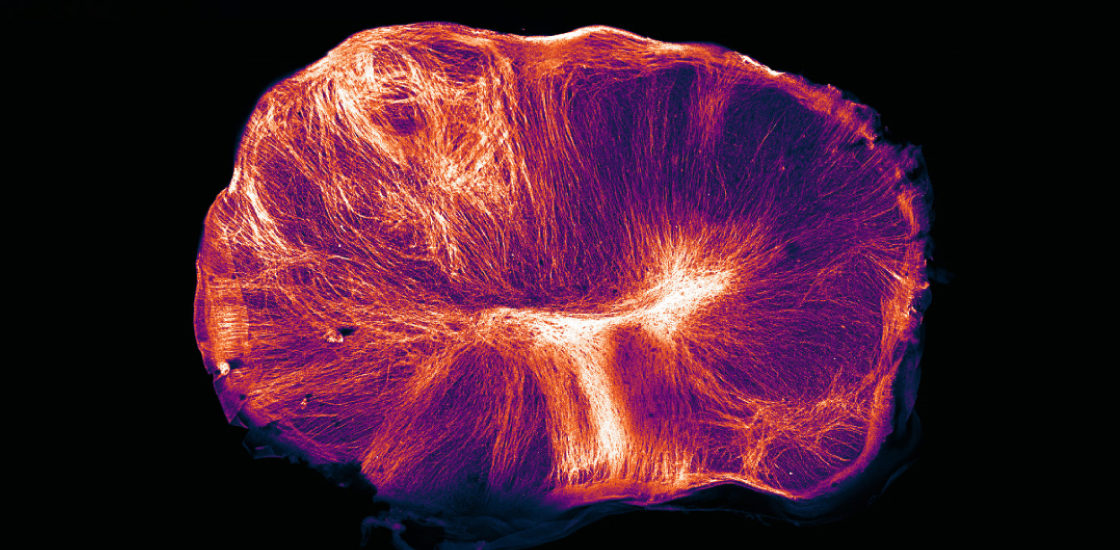New method creates complex, long-lived brain ‘organoids’
A new method for growing brain organoids allows them to survive for up to a year — more than four times as long as is possible with other methods.

A new method for growing brain organoids allows them to survive for up to a year — more than four times as long as is possible with other methods1.
Brain organoids are tiny balls of cells that mimic the structure and function of the human brain. Researchers grow them from human stem cells that they coax to become brain cells.
Organoids lack their own blood supply, so they have to be kept in a soup of nutrients. But once they reach a certain size, nutrients and oxygen can no longer reach their center, causing them to die. This decline normally begins around two to three months.
In the new study, researchers sliced up 55- to 60-day-old organoids and placed them on a porous membrane over a liquid nutrient mix of sugars, proteins, amino acids and salts. Each slice of the organoid acted as a complete organoid, the researchers say.
The setup provides a large surface area through which the organoids can take up oxygen and nutrients, allowing them to live up to 10 months longer than before, the researchers reported in March in Nature Neuroscience.
During that additional time, the organoids developed in ways that mimic what happens in the human brain, the researchers found.
For instance, developing neurons in the brain travel deliberately toward their destination. But in traditional organoids, neurons tend to move along haphazard trajectories and make random connections.
In organoids grown with the new method, however, neurons connect with each other in a specific, organized way.
To test the connections, the researchers placed the organoids next to a piece of spinal cord tissue and adjacent back muscle from mouse embryos. Within two to three weeks, neurons in the organoids extended branches into the spinal cord tissue, eventually triggering the muscle to twitch.
References:
- Giandomenico S.L. et al. Nat. Neurosci. 22, 669-679 (2019) PubMed
Recommended reading

PTEN problems underscore autism connection to excess brain fluid

Autism traits, mental health conditions interact in sex-dependent ways in early development

New tool may help untangle downstream effects of autism-linked genes
Explore more from The Transmitter

